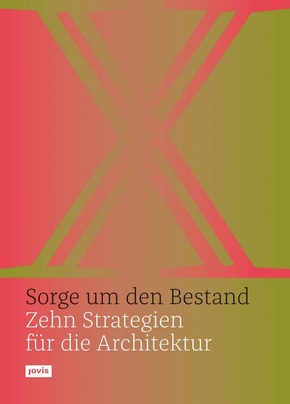| Verlag | Jovis |
| Auflage | 2020 |
| Seiten | 208 |
| Format | 17,1 x 1,9 x 24,2 cm |
| Großformatiges Paperback. Klappenbroschur | |
| Gewicht | 602 g |
| ISBN-10 | 3868596593 |
| ISBN-13 | 9783868596595 |
| Bestell-Nr | 86859659A |
Der neue Imperativ für das Bauen lautet: Erhalte den Bestand! Zehn Teams von Architekt_innen beschreiben ihre jeweilige Strategie und Haltung im Sorgetragen für den Gebäude- und Wohnungsbestand. Sie plädieren für ein achtsames Erhalten, Reparieren und Weiterdenken. Die Strategien starten mit der Wertschätzung des Bestehenden und der Permanenz von Gebäuden. Zentrale Fragen sind, wie sich neue Perspektiven für Bestandsgebäude durch städtebauliche Ansätze und gemeinwohlorientierte Kooperationen ergeben, welche Potenziale für ein Weiterbauen in städtischen Strukturen und in der Zwischenstadt schlummern und wie Leerstand in den Regionen durch Beteiligungskonzepte aktiviert werden kann. Darüber hinaus werden Strategien für die heute errichteten Gebäude, also den künftigen Bestand, formuliert - vom zirkulären Materialeinsatz bis zur Offenheit und Wandelbarkeit für kommende Anforderungen.
Rezension:
"Die Publikation ist ein Plädoyer für die verantwortungsvolle Pflege vorhandener Substanz über die bislang betriebswirtschaftlich begründete Lebensdauer von dreißig Jahren für Gebäude hinaus sowie für eine neue, bezahlbare Umbaukultur in Ergänzung zum dringend notwendigen Neubau in allen Preissegmenten." (dabonline, 01.2021)
There's a new imperative in construction: preserve the existing stock! Ten architecture teams describe their individual strategies and attitudes with regard to the care of existing building and housing stock. They make a case for mindful retention and renovation of what is extant, as well as for exploring new ideas. Their strategies start with an appreciation of the buildings that are already there and of the permanence of construction. The central questions of the volume ask how city planning approaches and collaborations in the public interest can provide new possibilities for existing building stock, what potential for continued construction lies dormant in urban frameworks and in the "in-between cities", and how unused buildings in regional locations can be activated through participation programs. On top of that, the contributors formulate strategies for buildings that are being constructed today-the housing stock of the future-ranging from the circular use of materials to cr eating openness and transformability for challenges yet to come.

